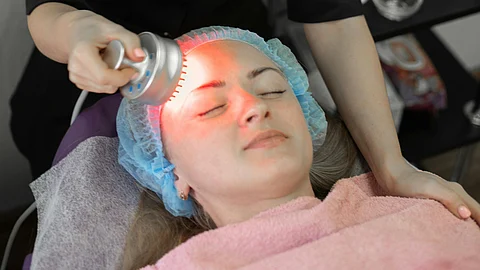
- Home
- MedBound Hub
- InternshipInternship
- BiographyBiography
- InterviewInterview
- Medicine
- Pharmacy
- Physical Therapy
- Biotechnology
- College/InstituteCollege/Institute
- Dentistry
- Blog
- Wellness & Nutrition
- Nursing
- Opinion
- Videos

By Pheno
Red light therapy has gained attention for its wide-ranging applications, from improving skin texture to promoting muscle recovery. As more people adopt this technology, the market for at-home devices continues to expand. With numerous options available, choosing the right one can be challenging. Selecting a suitable red light therapy device isn't just about finding one that looks appealing or fits a budget. The decision should be guided by functionality, purpose, and reliability. To help navigate this space, it's essential to understand the key characteristics that distinguish high-quality products from those of lesser quality.
Light therapy products come in various formats, each designed with particular needs in mind. Handheld devices target small areas like the face or joints, while full-body panels are built for broader exposure. Some are optimized for skincare, others for pain relief or fitness recovery. With so many functions and configurations, it's useful to browse light therapy products to compare features and formats across brands. This step can highlight differences in wavelength options, power output, design, and user experience. Researching product types early on helps create a clearer picture of what aligns with your needs, whether that’s daily facial care or deep-tissue muscle treatment.
The effectiveness of a red-light therapy device often comes down to power density, which is typically measured in milliwatts per square centimeter (mW/cm²). Higher power density means more light energy is delivered to the tissue in a shorter amount of time. This can reduce the length of sessions and increase the likelihood of results. That said, more isn’t always better. An excessively powerful device can produce heat and cause skin discomfort if used improperly. Look for products that strike a balance—enough power to be effective without creating risk or discomfort. Pay attention to energy output, and check whether the device provides clear guidelines on how far it should be held from the skin, and for how long. These details contribute to safer, more consistent use.
Size plays a practical role when selecting a red-light therapy device. A compact, portable unit may be ideal for treating small zones like the face or hands, especially for users with limited space. Larger panels or wrap-around designs offer greater coverage, making them suitable for full-body exposure or large muscle groups. The ideal size also depends on how often and where you plan to use it. A full-body setup might be overkill for someone interested in occasional facial treatments, but a handheld device might feel limiting for daily full-leg sessions. Coverage area affects both time and convenience. With a larger device, more skin can be exposed at once, meaning fewer sessions or reduced repositioning during use. Matching the device size with your treatment area helps improve efficiency and comfort over time.
Not all light therapy devices are created under the same quality standards. Look for safety certifications from recognized regulatory agencies such as the FDA, CE, or RoHS. These designations signal that the device has been evaluated for electrical safety and biocompatibility. Durability is another point of consideration. A well-made unit should feel solid, not flimsy, and should include thoughtful design features like cooling systems, heat dispersion panels, and ergonomic controls. Materials should be non-toxic, especially since the device may come in direct contact with skin. A manufacturer that offers warranties or transparent customer support policies typically demonstrates more confidence in its product. Investing in a safe, well-built device can make the difference between consistent results and early replacement.
Ease of use can influence how regularly a red-light therapy device gets incorporated into a routine. Devices that include digital timers, adjustable intensity levels, or pre-set treatment modes offer greater flexibility and control. Features such as automatic shut-off, mobile app connectivity, or voice activation can streamline the experience, especially for users new to the technology. Customization goes beyond convenience—it enables tailoring treatment to different parts of the body or varying skin sensitivities. The more intuitive the interface, the more likely it is that sessions become habitual. A user-friendly design can turn an intimidating piece of tech into a daily wellness ritual. Checking reviews or demo videos can help reveal how a device performs in real-world settings.
Choosing a red-light therapy device involves more than browsing specs or chasing trends. It’s about aligning the device with your personal goals, lifestyle, and comfort level. The right choice is the one that fits seamlessly into your routine and delivers consistent, visible benefits. By looking beyond surface features and marketing claims, it's possible to find a device that supports lasting improvements in health and well-being.
